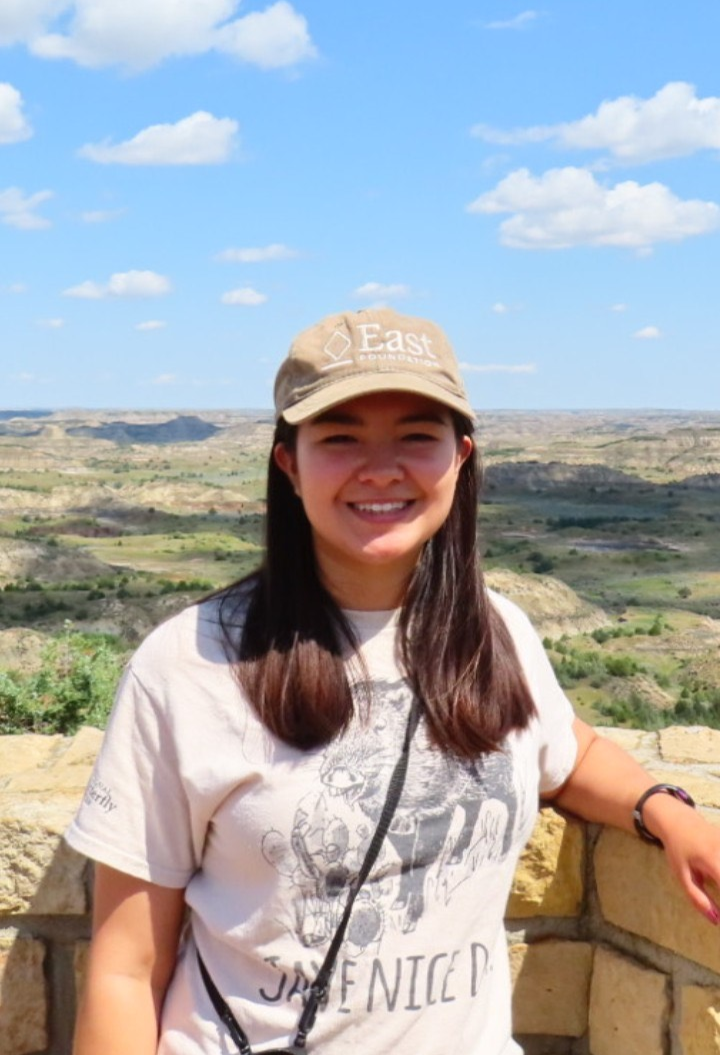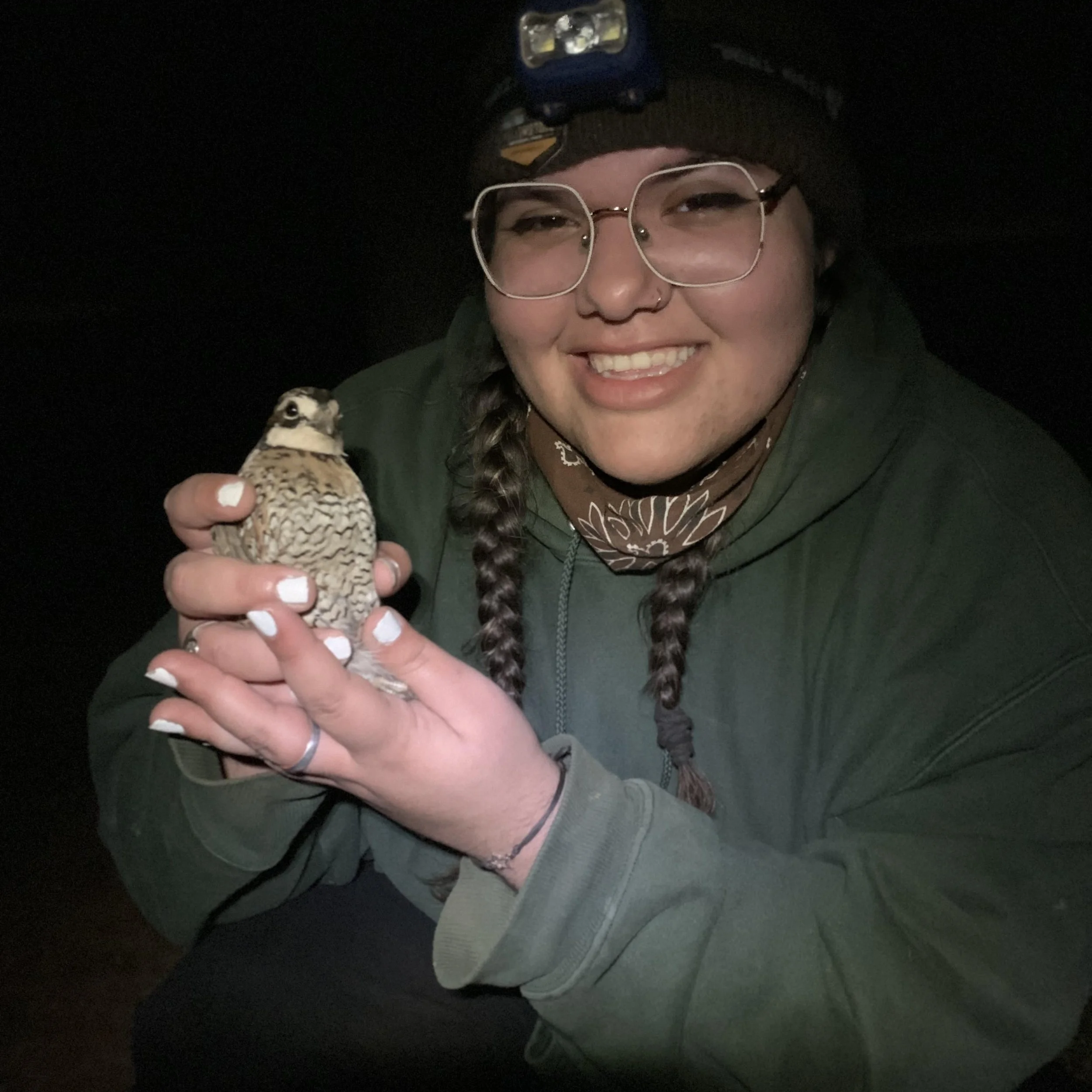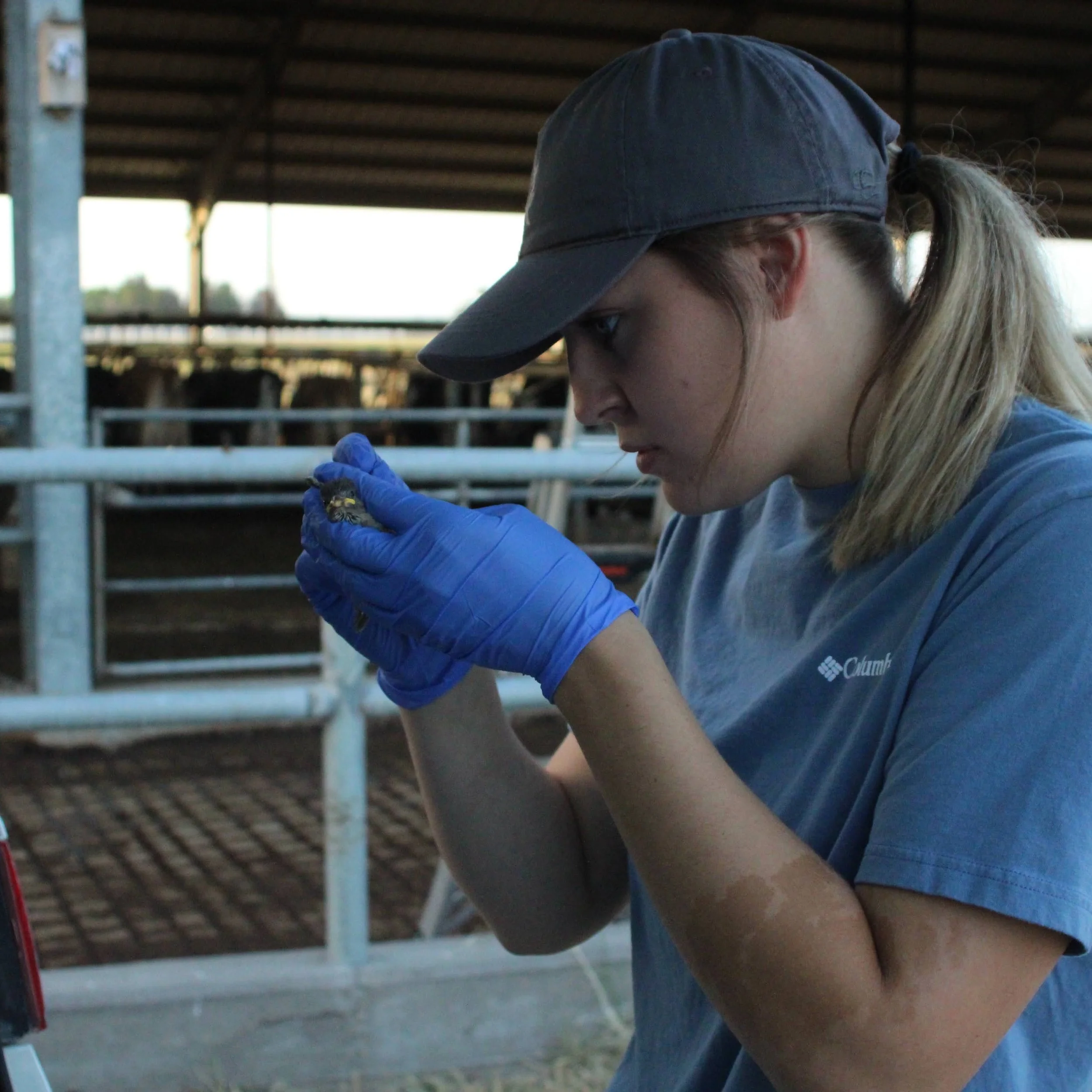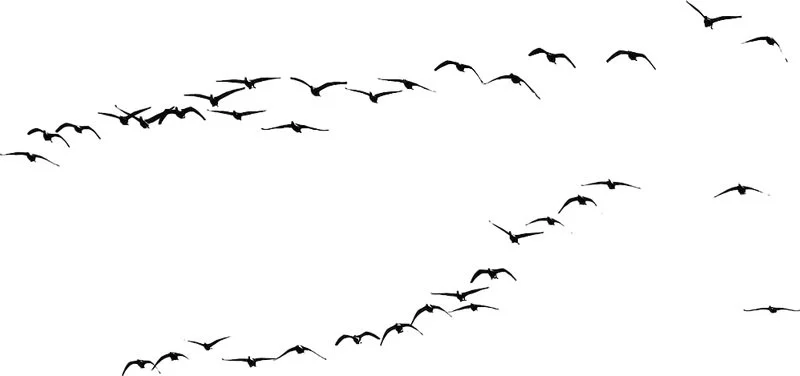Meet the Lab
Dr. Heather Mathewson
Dr. Mathewson has a diverse research program that primarily focuses on how wildlife populations respond to anthropogenic changes in the environment. Her current research includes riparian and grassland restoration, phenotypic plasticity in house sparrows, microplastics in songbirds, efficacy of wildlife-friendly materials for erosion control, effectiveness of environmental DNA for monitoring populations, and human-wildlife coexistence in Botswana. Additional research is associated with management and conservation of bison, quail and doves, songbirds, and pollinator systems. She also serves as the advisor for the Student Chapter of The Wildlife Society
A faculty member in the Wildlife and Natural Resources department, Dr. Mathewson serves as Associate Professor and Graduate Coordinator. She received her B.S. and M.S. from Texas A&M University in Wildlife & Fisheries Sciences and her Ph.D. from University of Nevada, Reno in Ecology, Evolution, and Conservation Biology.
Graduate Students
Lindsey Willingham
I'm a PhD student whose research is investigating how extreme temperatures influence songbird behavior and reproduction. I'm a part of a large collaboration that was started out of North Dakota State University by PI Dr. Britt Heidinger and funded by NSF. We have study sites in North Dakota, Kentucky, Oklahoma and here in Stephenville, Texas to create a latitudinal temperature gradient for researching the underlying mechanisms of Bergmann's rule using house sparrows (Passer domesticus). There are many possible mechanisms being explored on this project for explaining body size differences, but I am specifically looking at how parental behavior during the nestling period varies with temperature across our sites and how this might influence nestling body size. Additionally, I am utilizing eggs that resulted in hatching failure from these same house sparrow populations to investigate how environmental factors like temperature, humidity, and precipitation may influence embryo survivability. With my research studies, I am largely interested in how these birds are coping with the extreme Texas heat, especially during such physiologically demanding periods like breeding season. Once finishing graduate school, I would like to stay in academia. I am striving to become a professor with my own small research lab. I'm mainly interested in avian research, but I enjoy a little bit of everything and hope to have a research lab with broad interests.
Addison Singleton
I am a PhD graduate student whose research explores plant-pollinator interactions in the context of anthropogenic disturbances. I'm especially interested in native plant-pollinator interactions, caterpillar-host interactions, and invertebrate natural history. The intricacies of the natural world continue to encourage my personal and academic pursuits; I find nothing more fulfilling than exploring the different species with whom we share the planet.
Ricky Garibay
As an outdoorsman, wildlife biologist, and graduate researcher, I have always remained true to my core values of compassion, commitment, and tradition while following the stewardship and management of wildlife. Growing up hunting and ranching, I saw firsthand what happens if species are not managed, like feral pigs. Those experiences made me want to become more involved in active management, which led me to study wildlife and natural resources.
My current research project, “Feral Pig Activity Patterns in Palo Pinto Mountains State Park” is based in Palo Pinto Mountains State Park near Strawn, Texas. It investigates the abundance, habitat use, and interspecific interactions of feral pigs, white-tailed deer, and coyotes. Using game camera surveys, we aim to provide insights into the ecological impacts of invasive feral pigs on native ecosystems and their interactions with other vital species. Our results will help park managers understand species activity over time, aiding in future management decisions.
Peyton Harper
Hi! My name is Peyton and I am pursuing a PhD in Animal and Natural Resource Science. My research focuses on bat drinking behavior at natural and anthropogenic water sources. In my free time, I love drawing, crocheting, and spending time with my cats. After I graduate, I hope to continue in academia and conduct my own research!
Alexander Hoxie
Alexander Hoxie is a master’s student in the Mathewson Lab. He works as part of the house sparrow project in collaboration with North Dakota State University, Oklahoma State University, and the University of Kentucky. His thesis research focuses on nonlethal methods for monitoring microplastics in house sparrows. As part of this project, he can often be found either in the field measuring house sparrow nestlings or in the lab analyzing samples for microplastic contamination. His research will provide important baseline data and inform future research on microplastics in songbirds. He is a Teaching Assistant in the Department of Wildlife and Natural Resources and serves as a mentor for several undergraduate students.
Alex is interested in pursuing a Ph.D. in Wildlife. His research interests are rooted in the conservation and restoration of birds and their habitats. In his future research, he hopes to utilize historical data and contemporary field studies to determine how the Texas bird community has changed over the last 150 years. He hopes to use this data to inform management decisions on public and private land across the state. He is an active member of The Wildlife Society, Texas Chapter of the Wildlife Society, the Association of Field Ornithologists, and the Texas Ornithological Society.
Autumn Patterson
Ty Cosper
Hi, I’m Ty Cotton Cosper, and I’ve been with the Mathewson Lab since Fall 2020. I started on a Henslow’s Sparrow research project in Paris, TX, and gradually expanded my role to assist with vegetation measurements, bird surveys, arthropod sampling, and camera data management on various projects.
In 2021 I took over an undergraduate project on the impact of bison grazing on arthropod and vegetation communities at Caprock Canyons State Park that continued through 2022. Alongside my research, I was a field tech for Turkey Peak Mitigation Project and assisted with Bobwhite Quail monitoring, telemetry, and translocation. Summer of 2024, I joined the House Sparrow Project, gaining experience collecting blood, fecal, and oral samples from nestlings and participating in translocation egg swaps.
In Fall 2024, I began my graduate research, focusing on the risks posed by erosion control products to protected species and wildlife, as part of a funded TxDOT grant. My thesis focuses on arachnids, particularly tarantulas and vinegaroons. I’m also assisting with a Texas Comptroller grant to assess the distribution and conservation status of the variable cuckoo bumblebee and American bumblebee in Texas, using novel environmental DNA monitoring.
Hannah Abelein
I am working on the TxDOT project, studying wildlife interactions with erosion control products (ECPs). We are particularly focused on erosion control blankets, which are composed of one or two mesh blankets with an attached matrix made of synthetic or natural materials. TxDOT requires contractors to install ECPs after road construction projects to reduce soil erosion and promote regrowth of vegetation; however, there have been anecdotal reports of wildlife experiencing entanglement and mortality in ECPs, and there is a particular concern for risks posed to threatened and endangered species in Texas. My focus within the study is on reptiles and amphibians (herpetofauna) and my research involves representative species for at-risk species in Texas. Ultimately, we will be providing TxDOT with rankings of different ECPs based on their “wildlife-friendliness,” or the risk of impediment and entanglement they pose to wildlife. These rankings will be included on TxDOT’s approved products list, which can be accessed by road construction contractors when deciding on the type of ECP to deploy after completion of their projects. We hope that this will allow contractors to make informed decisions when choosing materials, to find products that will satisfy requirements for preventing erosion while also reducing risk to wildlife that may encounter these products in their habitat.
Grace Soechting
My name is Grace Soechting, and I am pursuing graduate research under Dr. Heather Mathewson in collaboration with the Fossil Rim Wildlife Center. My work investigates giraffe feeding behavior in captivity, focusing on improving their diet and enrichment strategies to promote well-being. I’m excited about this research journey and intend to apply my skills and passion for animal behavior to field-based conservation in the future.
Catalina Berry
I am a Master’s student pursuing a degree in Agricultural and Natural Resource Sciences as part of Dr. Mathewson’s and Dr. Mitchell’s lab. I am broadly interested in wildlife ecology, but my greatest interest lies in the conservation, ecology, behavior, and human-wildlife interactions of songbirds and grassland birds. The goal of my thesis project is to use eBird data to create species distribution models for savannah sparrows in the Western Cross Timbers ecoregion and evaluate model performance. I had previously collected nonbreeding grassland bird and vegetation data at sites within the ecoregion to evaluate their response to grassland restoration and to validate the species distribution model. Before coming to Tarleton, I was previously employed as a Range Ecology Technician and Lead Quail Research Technician in South Texas with the East Foundation, then as a Piping Plover Technician in North Dakota with The Nature Conservancy in collaboration with USFWS. As part of the President’s Excellence in Research Scholars initiative at Tarleton, I led the Fishers Island Research and Study Team to assess the avian, arthropod, and vegetation community on a restored grassland in New England. After graduating, I plan to pursue a career in wildlife management with state, federal, or nonprofit agencies.
Zach Bellows
My name is Zach Bellows and I am a part of an ongoing project located in Palo Pinto and Stephens County, TX called the Turkey Peak Mitigation Project. I am currently studying riparian vegetation responses to the removal of heavily encroached Ashe juniper (Juniperus ashei) monocultures in a riparian landscape. This project is located at the Palo Pinto Mountains State Park which is about an hour drive west for the Dallas-Fort Worth metroplex. After my masters, I would like to continue pursuing jobs in grassland and woodland restoration and management in North-central Texas.
Cameron Starnes
I am a master's student on the Turkey Peak Mitigation Project. The project is located at Palo Pinto Mountains State Park in Strawn, Texas and focuses on the removal of Ashe juniper and re-seeding of native grasses. With these restoration efforts, we hope to increase streamflow through Palo Pinto Creek and into Palo Pinto Creek Reservoir, which will then lead to the expansion of Palo Pinto Creek Reservoir to supply more water for the residents of Palo Pinto County.
Along with vegetation surveys, we also conduct waterfowl surveys, avian point count surveys, and wintering grassland bird surveys at the study site. We also conduct year-round camera trapping across the study area, as well as monitor erosion of Palo Pinto Creek through yearly stream monitoring photos.
Natasha Hardy
I am a graduate student in the College of Agricultural and Natural Resources, specializing in Zoo Conservation and Species Management. As a non-thesis student, I am dedicated to gaining a comprehensive understanding of my field through seminars, research papers, and actively supporting my classmates in their research projects. I have a deep passion for conserving biodiversity and exploring the dynamic relationships between species and their habitats. Additionally, I am particularly interested in aquaponics and aspire to integrate this sustainable system into the zoological world, enhancing resource efficiency and animal care. In my remaining free time I own a small hobby business in leatherwork, along with partaking in hydroponics to cultivate plants, fishing, hunting, reading, photography, and hobby crafts. My ultimate goal is to contribute to global conservation initiatives, working with organizations that promote sustainable practices and protect endangered species.
Research Lab Manager
Ryan Ament
Hello, I’m Ryan and I’m the lab manager for the Mathewson and Mitchell labs. I assist with several projects as a technician and help with general lab maintenance. I’ve also taken on the Bombus environmental DNA (eDNA) project, where we are looking at the use of flowering vegetation as a potential environmental medium to assess the distribution of the variable cuckoo bumble bee and the American bumble bee across the state of Texas.
I received my bachelors in Biology from Texas State University, where I was an undergraduate research assistant focusing on informal science education and community science. While I have a passion for science communication and outreach, my graduate research interests are in subjects such as plant-insect relationships, native restoration, land management impacts, and anthropogenic effects on insect communities. When I’m not working, you can usually find me crouched in the grass trying to get a good picture of a bug, working on a new art project or trying out a new recipe.
Undergraduate Students
Liliana Navar
Hello everyone! My name is Liliana Navar, and I’m from El Paso, Texas. I am currently a senior and serve as the historian for the Tarleton student chapter of The Wildlife Society. I am working on a research project that investigates the nocturnal and diurnal use of riparian areas by feral pigs in north-central Texas. In the past, I conducted undergraduate research examining the impact of minimizing soil disturbance on the restoration of mesquite-encroached grasslands. I am passionate about big game and hope to attend graduate school in the future.
Chloe Delahoussaye
I have served as an undergraduate researcher and assistant for the past two years. My initial project focused on evaluating various soil disturbance methods aimed at restoring a cedar-elm encroached riparian grasslands. After dedicating a summer to habitat restoration, I undertook a project involving the installation of wood duck nesting boxes on a local ranch and monitored their use with game cameras. Additionally, I am currently a technician for the Palo Pinto Mountains State Park mitigation project.At present, I am involved in a research project under Dr. Heather Mathewson, investigating the seasonal abundance and site use of three waterfowl species in north-central Texas. I also actively contribute as the president of the Tarleton Student Chapter of The Wildlife Society. My future aspirations include enhancing the resources and outreach of our student chapter, acquiring diverse hands-on experience, and pursuing graduate studies with a focus on waterfowl research.
Ashley Bratten
Gracie Gold
Undergraduate research: Parental attentiveness of House Sparrows across varying temperatures. The study examines parental behaviors in free-living House sparrows across a latitudinal and temperature gradient from Texas, Oklahoma, Kentucky, and North Dakota populations. The purpose of the study is to better understand how temperature influences parental attentiveness in passerines during incubation, with implications for how birds could respond to climate change.
Hannah Pepper-Atkinson
Hi! My name is Hannah Pepper Atkinson. I am an undergraduate field technician and researcher in the Mathewson and Mitchell labs. I work under the Turkey Peak mitigation and the Bumblebee eDNA projects. Currently, my research focuses on predicting habitat for bumblebees in Texas based on floral availability and seasonality. I have also worked on projects centered on woody encroachment and minimalizing soil disturbance, including my own research investigating using silver bluestem as a catalyst in restoring juniper encroached grasslands. Additionally, I am an officer of Tarleton’s student chapter of The Wildlife Society, serving as Vice President and plant identification coach.
Carolyn Hurta
I started working as a research assistant to the House Sparrow project in the summer of 2024. I am now taking on the role of managing data collection and organization for the House Sparrow project this semester. My career goals are to lead a research team and discover a species. I am very interested in restoration and conservation as well.
Gaven Sanders
Howdy, my name is Gaven Sanders. I am an undergraduate field technician and researcher in Dr. Mathewson’s lab. I am a part of the Turkey Peak research project, where I currently assist with conducting surveys, collecting game trail footage, and entering data. I am also involved in undergraduate research that is focusing on arthropod responses to bison grazing at Caprock Canyons State Park. Additionally, I serve as an officer of Tarleton’s student chapter of The Wildlife Society as Student Liaison. I am also a member of the chapter’s quiz bowl team.
























